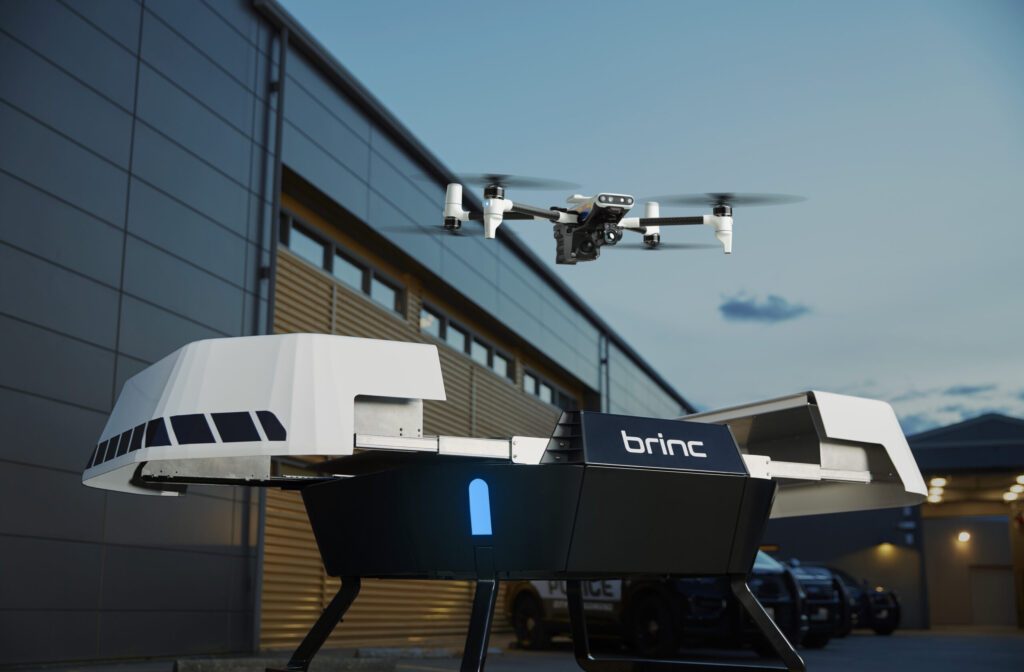BRINC’s New Platform Enhances Emergency Response with Rapid Drone Deployment
BRINC, a leader in drone technology for first responders, has announced the launch of the Responder drone and Responder Station, marking a significant advancement in Drone as First Responder (DFR) operations. This new platform is designed to assist first responders in arriving at emergency scenes within 70 seconds, providing critical situational awareness and delivering life-saving medical supplies.
Brinc’s first platform, the Lemur, was a detail-oriented, purpose built tool for SWAT operations and emergency response. With the Responder platform, the company has taken the same approach to develop a tool that fits into the existing workflows of first responders, meeting current needs for agencies required to do more with less.
BRINC’s integrated DFR solution addresses the growing need for efficient emergency response, particularly in light of police staffing shortages. The Responder system aims to handle approximately 25% of calls for service without requiring personnel dispatch. Blake Resnick, BRINC Founder & CEO, stated, “The launch of BRINC DFR marks a pivotal moment in the evolution of emergency response. Our DFR initiative is set to revolutionize the public safety landscape by empowering first responders with capabilities that significantly improve emergency response times and outcomes.”
Reimagining Emergency Response with Responder
The American-made Responder drone can operate as part of an automated DFR system, a patrol-led approach, or as a manually deployed unit. It is equipped to carry various life-saving payloads, such as EpiPens, automated external defibrillators (AEDs), Personal Floatation Devices (PFDs), and naloxone (Narcan). Additionally, its two-way communication feature enhances de-escalation efforts during critical situations.
The Responder drone is outfitted with a Full HD, 40x zoom visual camera array and a 640px thermal sensor, aiding in tasks such as identifying hotspots in structure fires and locating individuals during search and rescue operations. The drone’s emergency response vehicle livery includes custom agency markings, red and blue lights, and an integrated siren.
Rapid Deployment with Responder Station
Complementing the Responder drone is the Responder Station, a robotic charging nest designed for quick deployment. The Station ensures drones are protected from weather and ready to deploy within five seconds. Drones return to the nearest available Station post-mission, recharging from 0 to 100% in 40 minutes.
Unified Drone Operations with BRINC LiveOps
BRINC’s LiveOps software platform drives the DFR solution, accessible via modern web browsers. Features include teleoperations, district-wide deployment management, two-way communications, augmented reality overlays, integrated airspace awareness, and a transparency portal for community engagement. The platform also integrates with existing public safety infrastructure.
Don Redmond, BRINC Vice President of Advanced Public Safety Projects, highlighted the significance of this integrated approach, stating, “Our fully integrated approach with Responder, Responder Station, and BRINC LiveOps sets us apart in the industry, enabling seamless coordination and rapid response in times of crisis. We anticipate that our innovative solution will not only enhance operational efficiency but save lives.”
Meeting the Growing Demand for Emergency Response Drones
BRINC’s new solution addresses the limitations of previous disjointed public safety drone systems. With over 500 public safety agencies already utilizing BRINC devices, and more than 150 moving towards city-wide 911 response drone deployments, the company continues to expand its impact. Three agencies are set to begin BRINC DFR programs by the end of the year.
Read more:

